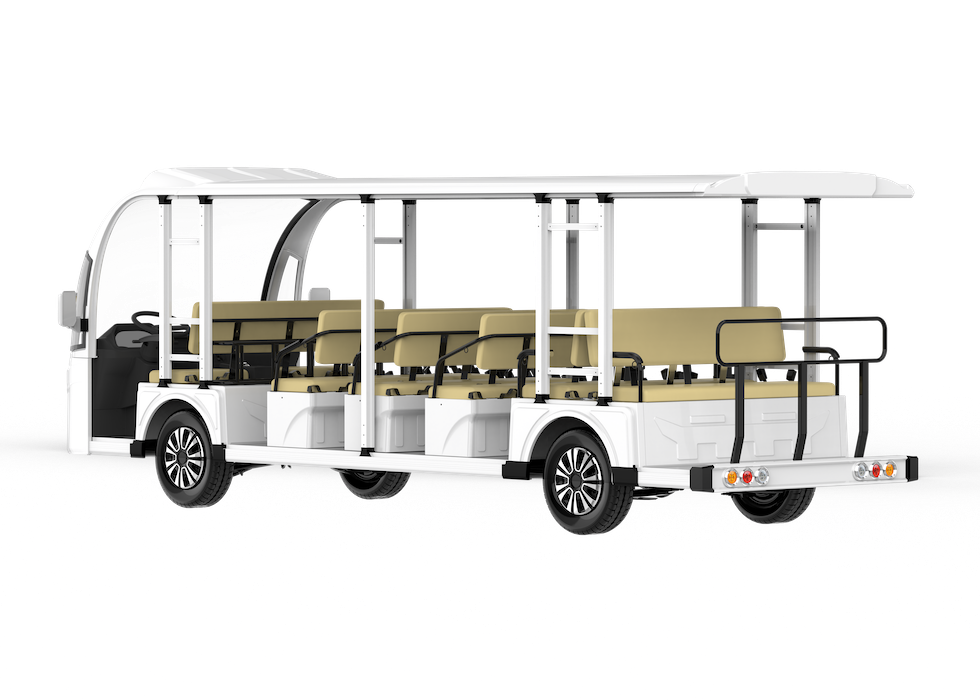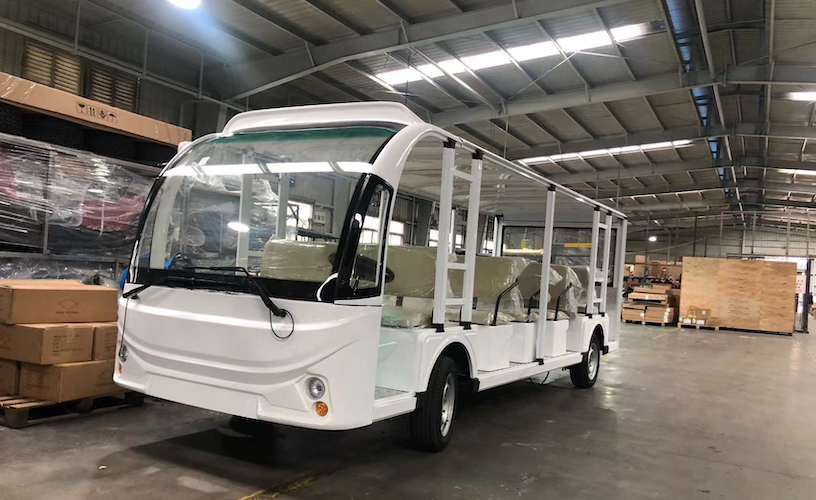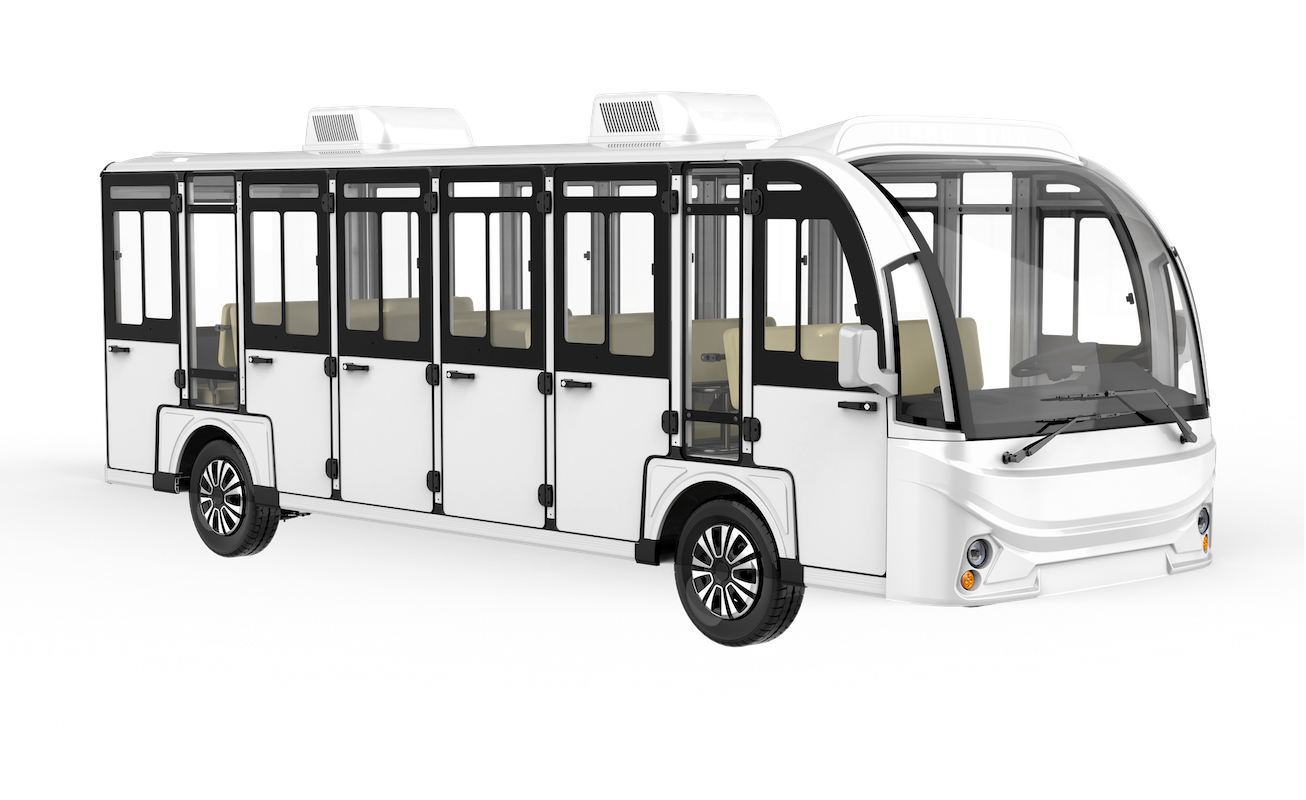Content Menu
● Understanding the Electric Sightseeing Bus Market
>> The Rise of Electric Vehicles
>> The Role of Sightseeing Buses
● Key Features of 23 Seater Electric Sightseeing Buses
>> Design and Comfort
>> Advanced Technology
>> Battery and Range
● Choosing the Right Manufacturer
>> Reputation and Experience
>> Customization Options
>> After-Sales Support
● The Future of Electric Sightseeing Buses
>> Innovations on the Horizon
>> Environmental Impact
>> Market Trends
● Frequently Asked and Questions regarding 23 Seater Electric Sightseeing Bus Manufacturers
>> 1. What are the typical maintenance requirements for 23-seater electric sightseeing buses?
>> 2. How do government incentives impact the adoption of electric sightseeing buses?
>> 3. What safety features are standard in modern 23-seater electric sightseeing buses?
>> 4. How does battery technology affect the performance of electric sightseeing buses?
>> 5. What are the benefits of using electric sightseeing buses over traditional diesel buses?
The electric vehicle industry has seen significant growth in recent years, particularly in the realm of electric buses. Among these, the 23-seater electric sightseeing bus has emerged as a popular choice for various applications, including tourism, city tours, and shuttle services. This article delves into the key aspects of 23-seater electric sightseeing bus manufacturers, exploring their significance, the technology behind these vehicles, and what to consider when choosing a manufacturer.
Understanding the Electric Sightseeing Bus Market
The Rise of Electric Vehicles
The global shift towards sustainable transportation has led to an increased demand for electric vehicles. Governments and organizations are investing in electric mobility to reduce carbon emissions and promote eco-friendly practices. Electric sightseeing buses are at the forefront of this movement, providing a clean and efficient mode of transport for tourists and city dwellers alike. The transition from traditional fossil fuel-powered vehicles to electric models not only addresses environmental concerns but also aligns with the growing consumer preference for sustainable options. As cities become more congested and pollution levels rise, electric buses offer a viable solution to enhance urban mobility while minimizing ecological footprints.
The Role of Sightseeing Buses
Sightseeing buses play a crucial role in the tourism industry. They offer a convenient way for visitors to explore cities, parks, and attractions. The introduction of electric models has enhanced this experience by providing quieter, smoother rides that are less harmful to the environment. The 23-seater configuration is particularly appealing for small groups, making it an ideal choice for tour operators. These buses not only facilitate transportation but also serve as mobile platforms for storytelling, allowing tour guides to share insights and historical context about the locations being visited. The ability to accommodate small groups fosters a more intimate and engaging experience, encouraging tourists to connect with their surroundings.

Key Features of 23 Seater Electric Sightseeing Buses
Design and Comfort
One of the primary considerations for manufacturers is the design of the bus. A well-designed electric sightseeing bus should prioritize passenger comfort. This includes spacious seating arrangements, climate control systems, and large windows for optimal views. Manufacturers often focus on creating an inviting atmosphere that enhances the sightseeing experience. Additionally, the interior design can incorporate features such as adjustable seating, USB charging ports, and multimedia systems to provide entertainment and information during the journey. The aesthetic appeal of the bus, both inside and out, can significantly influence a tourist's perception and enjoyment, making thoughtful design a key factor in the success of these vehicles.
Advanced Technology
Modern electric sightseeing buses are equipped with advanced technology to improve performance and safety. Features such as regenerative braking, GPS navigation, and real-time tracking systems are becoming standard. These technologies not only enhance the driving experience but also provide valuable data for operators to optimize their services. For instance, GPS navigation can help drivers avoid traffic congestion, while real-time tracking allows operators to monitor bus locations and adjust schedules accordingly. Furthermore, the integration of smart technology can facilitate passenger engagement, such as providing audio guides or interactive displays that enhance the educational aspect of the tour.
Battery and Range
The battery system is a critical component of any electric vehicle. Manufacturers must ensure that their buses are equipped with high-capacity batteries that provide sufficient range for daily operations. A 23-seater electric sightseeing bus should ideally have a range that allows for full-day tours without the need for frequent recharging. This is particularly important for tour operators who need to maintain a reliable schedule. The choice of battery technology, such as lithium-ion or solid-state batteries, can significantly impact the bus's performance, charging time, and overall lifespan. Additionally, manufacturers are exploring innovative solutions like fast-charging stations and battery swapping systems to further enhance operational efficiency.
Choosing the Right Manufacturer
Reputation and Experience
When selecting a manufacturer for 23-seater electric sightseeing buses, it is essential to consider their reputation and experience in the industry. Established manufacturers with a proven track record are more likely to deliver high-quality products. Researching customer reviews and testimonials can provide insights into the reliability and performance of the buses. Furthermore, attending industry trade shows and exhibitions can offer opportunities to interact with manufacturers directly, allowing potential buyers to assess their expertise and commitment to innovation. A manufacturer’s history of successful projects and partnerships can also serve as a testament to their credibility and reliability.
Customization Options
Different operators have varying needs, and a good manufacturer should offer customization options. This can include modifications to seating arrangements, color schemes, and additional features tailored to specific requirements. A manufacturer that is willing to work closely with clients to meet their needs is often a better choice. Customization can extend beyond aesthetics; it may also involve integrating specific technologies or amenities that enhance the passenger experience. For example, operators may request the installation of Wi-Fi, onboard refreshments, or specialized seating for passengers with disabilities, ensuring that the bus meets diverse customer needs.
After-Sales Support
After-sales support is a crucial aspect of the purchasing process. Manufacturers should provide comprehensive support, including maintenance services, spare parts availability, and training for operators. A strong after-sales support system ensures that the buses remain in optimal condition and that operators can address any issues that arise promptly. Additionally, ongoing training for drivers and maintenance staff can enhance safety and operational efficiency. Manufacturers that offer extended warranties and service packages can provide peace of mind to operators, knowing that they have reliable support throughout the lifespan of the vehicle.

The Future of Electric Sightseeing Buses
Innovations on the Horizon
The electric vehicle industry is continuously evolving, and manufacturers are constantly seeking ways to improve their products. Innovations such as autonomous driving technology and enhanced battery systems are on the horizon. These advancements will likely shape the future of electric sightseeing buses, making them even more efficient and user-friendly. The potential for autonomous electric buses could revolutionize the tourism industry by reducing labor costs and increasing operational flexibility. Furthermore, advancements in artificial intelligence and machine learning may enable these buses to adapt to passenger preferences and optimize routes in real-time.
Environmental Impact
As cities strive to reduce their carbon footprints, the demand for electric sightseeing buses is expected to grow. These vehicles contribute to cleaner air and quieter urban environments, making them an attractive option for municipalities and tour operators alike. The positive environmental impact of electric buses will play a significant role in their adoption in the coming years. Additionally, as public awareness of climate change increases, consumers are more likely to support businesses that prioritize sustainability. This shift in consumer behavior can drive demand for electric sightseeing buses, encouraging more manufacturers to enter the market and innovate.
Market Trends
The market for electric sightseeing buses is influenced by various trends, including urbanization, increased tourism, and government incentives for electric vehicle adoption. Manufacturers must stay attuned to these trends to remain competitive and meet the evolving needs of their customers. The rise of eco-tourism and the growing popularity of sustainable travel options are also shaping market dynamics. As more travelers seek environmentally friendly experiences, electric sightseeing buses can position themselves as a preferred choice for tour operators looking to attract this demographic.
The 23-seater electric sightseeing bus represents a significant advancement in the transportation sector, particularly for tourism and urban exploration. As the demand for sustainable transportation solutions continues to rise, manufacturers play a crucial role in delivering high-quality, efficient, and comfortable vehicles. By understanding the key features, choosing the right manufacturer, and staying informed about industry trends, operators can make informed decisions that enhance their services and contribute to a greener future. The future of electric sightseeing buses is bright, with opportunities for innovation and growth that promise to reshape the landscape of urban transportation.

Frequently Asked and Questions regarding 23 Seater Electric Sightseeing Bus Manufacturers
1. What are the typical maintenance requirements for 23-seater electric sightseeing buses?
Maintenance for electric sightseeing buses generally includes regular inspections of the battery system, electric motors, and braking systems. Routine checks on tire pressure, fluid levels, and electrical connections are also essential. Additionally, software updates for onboard systems and periodic cleaning of the bus interior and exterior are recommended to ensure optimal performance.
2. How do government incentives impact the adoption of electric sightseeing buses?
Government incentives, such as tax credits, grants, and subsidies, significantly lower the initial purchase cost of electric buses. These financial incentives encourage tour operators and municipalities to invest in electric vehicles, promoting a shift towards sustainable transportation. Additionally, some regions offer reduced registration fees and access to dedicated lanes, further enhancing the appeal of electric sightseeing buses.
3. What safety features are standard in modern 23-seater electric sightseeing buses?
Modern electric sightseeing buses typically come equipped with several safety features, including advanced braking systems, stability control, and collision avoidance technology. Many buses also include features like seat belts, emergency exits, and fire suppression systems. Additionally, some models offer cameras and sensors for improved visibility and monitoring of blind spots.
4. How does battery technology affect the performance of electric sightseeing buses?
Battery technology plays a crucial role in determining the range, charging time, and overall efficiency of electric sightseeing buses. Lithium-ion batteries are commonly used due to their high energy density and longevity. Advances in battery technology, such as solid-state batteries, promise even greater efficiency and faster charging times, which can enhance the operational capabilities of these buses.
5. What are the benefits of using electric sightseeing buses over traditional diesel buses?
Electric sightseeing buses offer several benefits over traditional diesel buses, including lower operating costs due to reduced fuel expenses and maintenance needs. They produce zero tailpipe emissions, contributing to cleaner air and a quieter urban environment. Additionally, electric buses can enhance the passenger experience with smoother rides and less noise, making them more appealing for tourists exploring city attractions.










































